Chapter: Digital Signal Processing : IIR Filter Design
Frequency Response Characteristic
FREQUENCY RESPONSE CHARACTERISTIC
The frequency response characteristic of |Ha(Ω)|2 is as shown. As the order of the filter N increases, the
butterworth filter characteristic is more close to the ideal characteristic.
Thus at higher orders like N=16 the butterworth filter characteristic closely approximate
ideal filter characteristic. Thus an infinite order filter (N ∞) is required to get ideal characteristic.
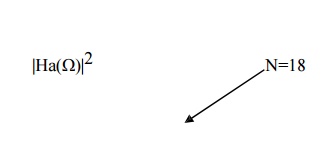
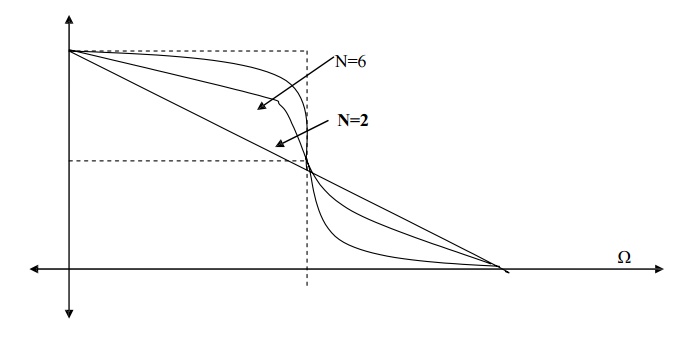
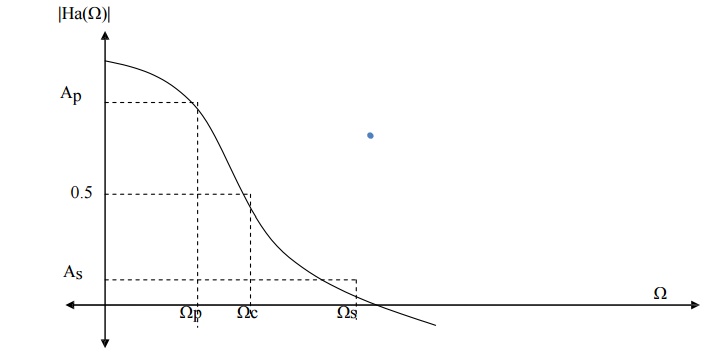
Ap=
attenuation in passband.
As=
attenuation in stopband.
Ωp =
passband edge frequency
Ωs =
stopband edge frequency
Specification
for the filter is

To determine the poles and order of analog filter consider equalities.
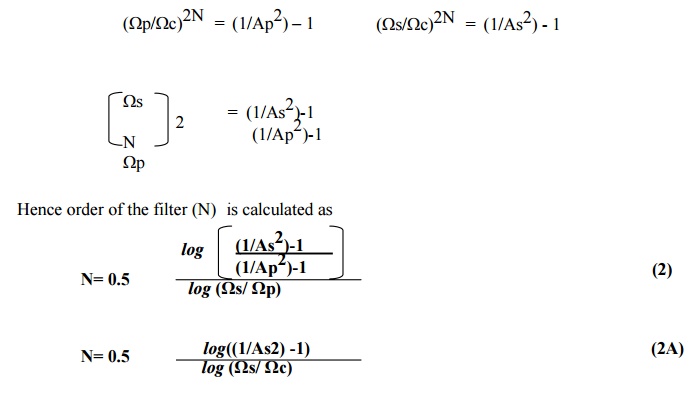

Q) Design a digital filter using a butterworth approximation by using impulse invariance.

Filter Type - Low Pass Filter
Ap -
0.89125
As -
0.17783
Ωp - 0.2∏
Ωs - 0.3∏
Step
1) To convert specification to equivalent analog filter.
(In impulse invariance method frequency
relationship is given as ω= Ω T while in Bilinear transformation method
frequency relationship is given as Ω= (2/T) tan (ω/2) If Ts is not specified
consider as 1)
|Ha(Ω)| ≥ 0.89125 for Ω ≤ 0.2∏/T and |Ha(Ω)| ≤ 0.17783 for Ω ≥ 0.3∏/T.
Step
2) To determine the order of the filter.

N= 5.88
1.
Order of the filter should be integer.
2.
Always go to nearest highest integer vale of N.
Hence N=6
Step 3) To find out the cutoff frequency (-3DB
frequency)

cutoff
frequency Ωc = 0.7032
Step 4) To find out the poles of analog filter
system function.
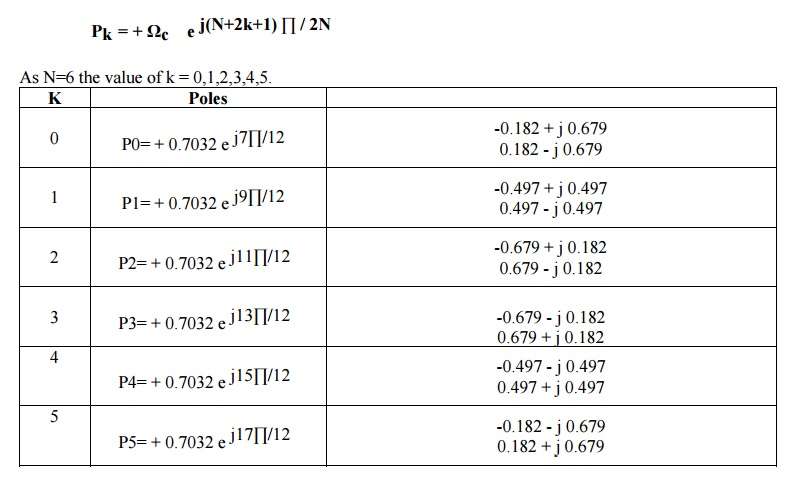
For stable filter all poles lying on the left
side of s plane is selected. Hence
S1 =
-0.182 + j 0.679 S1* = -0.182 - j 0.679
S2 =
-0.497 + j 0.497 S2*
= -0.497 - j 0.497
S3 =
-0.679 + j 0.182 S3* = -0.679 - j 0.182
Step
5) To determine the system function (Analog Filter)
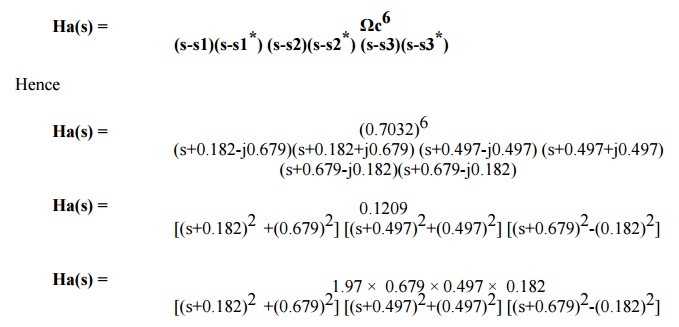
Step 6) To determine the system function (Digital
Filter)
(In
Bilinear transformation replace s by the term ((z-1)/(z+1)) and find out the
transfer function of digital function)
Step 7) Represent system function in cascade form
or parallel form if asked.
Q) Given
for low pass butterworth filter
Ap= -1 db
at 0.2∏
As= -15
db at 0.3∏
a) Calculate
N and Pole location
b) Design
digital filter using BZT method.
Q) Obtain
transfer function of a lowpass digital filter meeting specifications
Cutoff
0-60Hz
Stopband
> 85Hz
Stopband
attenuation > 15 db
Sampling
frequency= 256 Hz . use butterworth characteristic.
Q) Design
second order low pass butterworth filter whose cutoff frequency is 1 kHz at
sampling frequency of 104 sps. Use BZT and Butterworth
approximation.
Related Topics